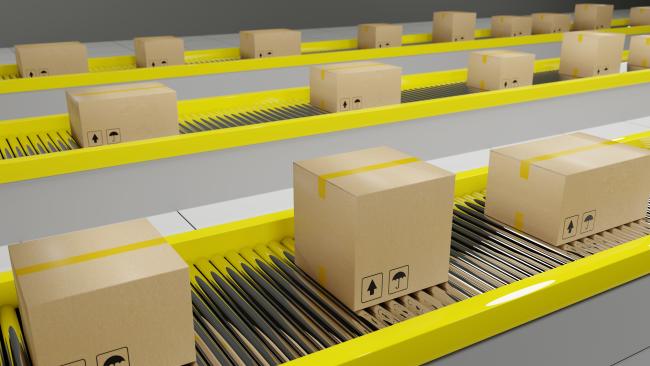In today’s textile industry, folding and packaging are essential components of the production process. Folding enables the fabric to be conveniently delivered to end customers in a neat and organised manner; while packing helps protect the fabric from damage during transit.
The folding and packing process is an important part of the textile industry and plays a vital role in ensuring that all fabrics are delivered safely and in pristine condition. With the right process in place, you can ensure your products reach their destination without any issues.
The process begins with cutting, sewing, fusing, or pressing before arriving at the crucial step of folding and packing the product. The very first step in the folding process is to cut the fabric into shapes of your preference. A variety of methods like band cutting, strip cutting and cross-cutting can be used to achieve the desired size. Once cut, fabric pieces are folded into several layers for easy handling and transportation.
Folding Methods:
The most common folding methods used are manual folding and automatic folding.
Manual folding involves manually stacking the fabric pieces on a flat surface and then pressing or rolling them into a neat bundle. This method is mostly used when dealing with small batches because it is time-consuming and labour-intensive.
Automatic folding, on the other hand, uses mechanised folds to quickly create neat fabric packages in larger batches. Computer-controlled equipment is used to fold the fabric automatically, reducing production time and labour costs.
Packaging Methods:
After folding, fabrics are often subjected to packing procedures like heat sealing or wrapping.
Heat sealing involves sealing the edges of the fabric with hot bars to create a neat package. Heat sealing is used to securely seal fabrics in plastic bags or wrap them with aluminium foil. This helps protect the fabric from moisture, dust, and other external elements.
Wrapping uses plastic or other materials to cover and protect the folded fabrics from dust and dirt during transit. Wrapping involves tightly wrapping fabrics with paper, plastic wrap, or other materials to protect them from dust and moisture. This packaging method is cost-effective and often used in transportation as it ensures protection without adding bulk or weight.
Each method has its own advantages and disadvantages. Heat sealing is fast and efficient, but it can be difficult to open sealed packages without leaving a mark on the fabric. Wrapping, on the other hand, is more labour-intensive but it’s easier to open and reuse.
The choice of folding and packaging method depends on the end goal. Some methods may be more suitable for certain fabrics or specific product requirements, while others might be more cost-effective. It is important to take into account all factors and choose the method that best suits your needs.
Once packaged, fabrics are ready for distribution, whether they are sent directly to stores or through third-party logistics providers. In addition, packaging also helps in branding and promotion.
By adding labels and promotional materials, packaging can help in increasing product visibility, enhance customer engagement, and promote brand loyalty.
Purpose of having a well-defined Folding Packaging Process
The main purpose of folding and packing is to ensure that all products are delivered without any defects, damages, or wrinkles. The details of the process vary from fabric to fabric according to its care instructions, size, weight, and end-use.
Different types of fabrics require different folding techniques which depend on the width and thickness of the material. Every fold has to be carefully done so that the fabric does not get damaged or wrinkled in transit.
The right packaging method helps maintain the product’s integrity during transportation and storage, which is important for customer satisfaction. Proper packaging also helps protect fabrics from the elements, ensuring that they arrive in perfect condition.
The key to successful folding and packing is to have a well-defined process that clearly explains the steps needed to complete the task. This will help ensure that all fabrics are folded and packaged properly, resulting in a quality product.
How To Improve The Folding & Packing Process?
Proper folding and packing require attention to detail and a great deal of skill. It is important to ensure that the process is well-defined and followed step-by-step to avoid mistakes.
The best way to improve your folding and packing process is to invest in proper equipment and train your employees on the right techniques. Automated machines can help reduce labour costs and speed up production, while skilled workers can fold and package fabrics with precision.
It is also important to use the right type of packaging materials for the job. Using the right materials can help protect fabrics from dust and moisture, ensuring that they arrive in perfect condition.
Finally, quality control is essential for successful folding and packing. Inspecting each package before it is shipped can help ensure that all products meet customer expectations.
In the textile realm, folding and packaging are essential. With a precise process in place, savvy equipment investments, and frequent quality control tests to guarantee customer expectations are met; pristine delivery of all products is feasible.
By investing the necessary time and resources into these processes, you can ensure that your fabrics will reach their destination without any issues. By understanding the importance of folding and packing, textile companies can ensure that their products are well-protected and arrive in perfect condition.
Wrapping Up:
In conclusion, folding and packing are essential components of the textile industry that ultimately ensure fabric quality and customer satisfaction. The folding process helps create neat packages while packing helps protect fabrics from dirt and damage during transit. An effective folding and packing system, along with the right equipment and packaging materials are vital components for long-term success.
Additionally, frequent quality control tests are necessary to guarantee that all products meet customer expectations. If textile companies devote both the necessary energy and resources to folding and packing, they will guarantee that their fabrics arrive intact. This not only creates satisfied customers but also encourages customer loyalty in the long run.



